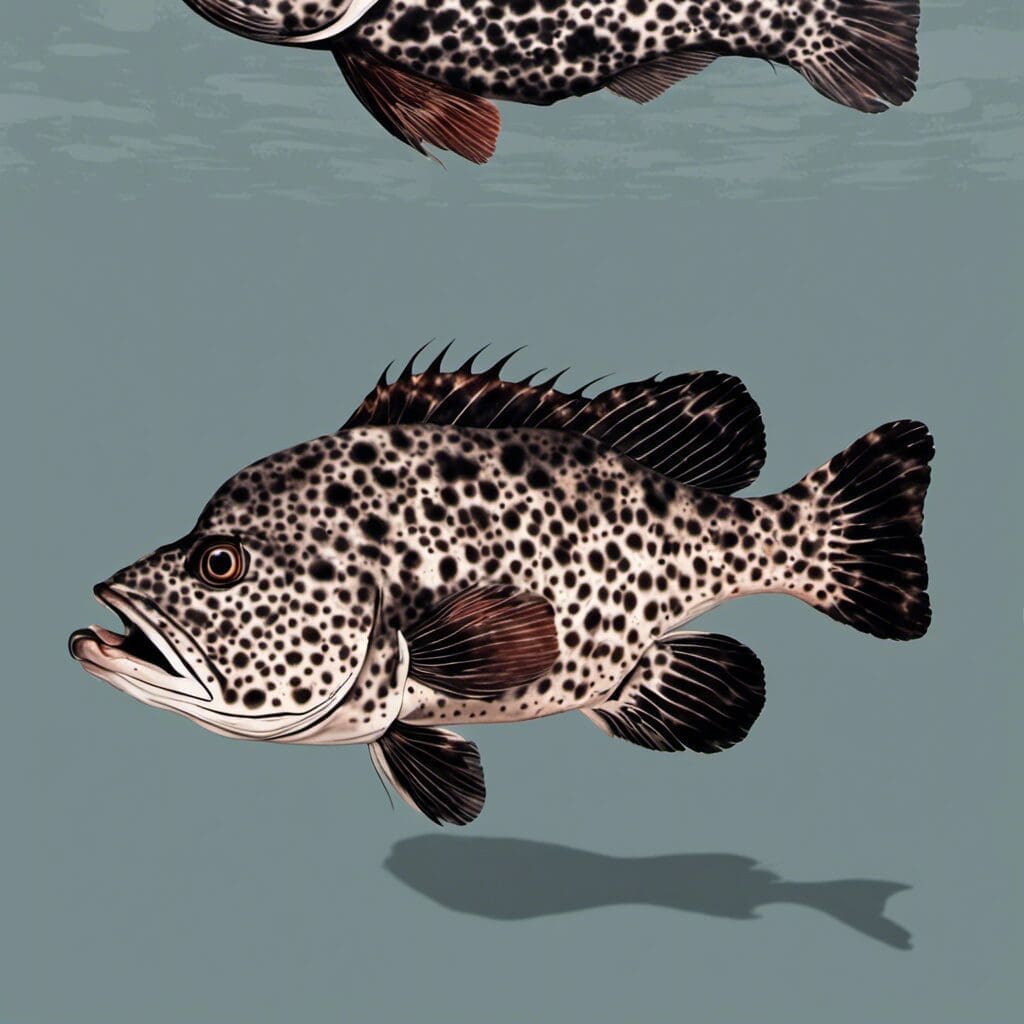Introduction
The Spotted Grouper, also known as the Epinephelus analogus, is a member of the large marine family Serranidae. This term generally includes sea bass and groupers. They are esteemed food and game fishes known for their attractive and intricate markings.
Conservation Status
Despite its enduring popularity among fishermen and seafood lovers alike, the Spotted Grouper is not under unusual risk. Its conservation status is currently regarded as of ‘Least Concern’ according to Fishbase. However, efforts to ensure sustainable fishing practices and respect for marine protected areas are encouraged not to put undue stress on its population.
Statistics
| Characteristic | Average | Range |
|---|---|---|
| Length | 70 cm | 50 – 90 cm |
| Weight | 6 kg | 3 – 10 kg |
| Lifespan | 20 + years |
It’s important to note that gender transformation from female to male, a trait common in groupers, usually happens at length of around 35 cm.
Distribution
The Spotted Grouper is found mainly in the Western Atlantic regions, spanning from Southern Florida to Brazil, and including the Gulf of Mexico and Bahamas.
Habitats
Spotted Groupers are typically located in marine areas, preferring saltwater over freshwater. They inhabit reef areas in depth range from 30 to 150 meters. They can adapt to a wide temperature range but mostly prefer warm waters.
When and Where to See
Spotted Groupers, being relatively solitary fish, are primarily seen during their spawning periods, which take place between October and December. This is also the best time to catch them. They are most active during the late afternoon and dusk.
Best Fishing Locations
The top fishing locations for Spotted Groupers vary, as this vibrant creature has quite a large range of habitats:
- Florida Keys, USA
- Bimini, Bahamas
- Coco Island, Costa Rica
- Cabo San Lucas, Mexico
- The Saint Peter and Saint Paul Archipelago, Brazil
How to Catch
Preferred baits or lures for Spotted Grouper include squid or small fish. These groupers can be caught using various fishing techniques like trolling, bottom fishing and deep sea fishing. The best time of the day is late afternoon while the seas are warm.
Identification Guide
The Spotted Grouper is named for its distinctive appearance. Its body is an olive or grey shade decorated with small brown spots; these spots extend to the fins and tail. Similar species, like the Goliath Grouper, can be differentiated by size (Goliath Groupers are significantly larger) and markings.
Culinary
Groupers, including the Spotted Grouper, are esteemed in culinary circuits. They offer a unique taste — mild, sweet flavor with a firm texture. They are low in fat and contain healthy minerals. Simple grilling or pan frying is often favored to enjoy its flavors.
Additional Information
Spotted Groupers are carnivore, preferring a diet of fish and crustaceans. They are known for their distinct mating behavior, which involves mass spawning. They are preyed on by larger fish and sharks. In terms of cultural significance, the Grouper family, including the Spotted Grouper, features in various folklore across its habitats, often revered for its majestic appearance and fighting spirit.
References and Further Reading
- Fishbase – Epinephelus Analogus
- Sustainable Fisheries – Groupers
- Seafood Watch – Sustainable Fisheries Guide

